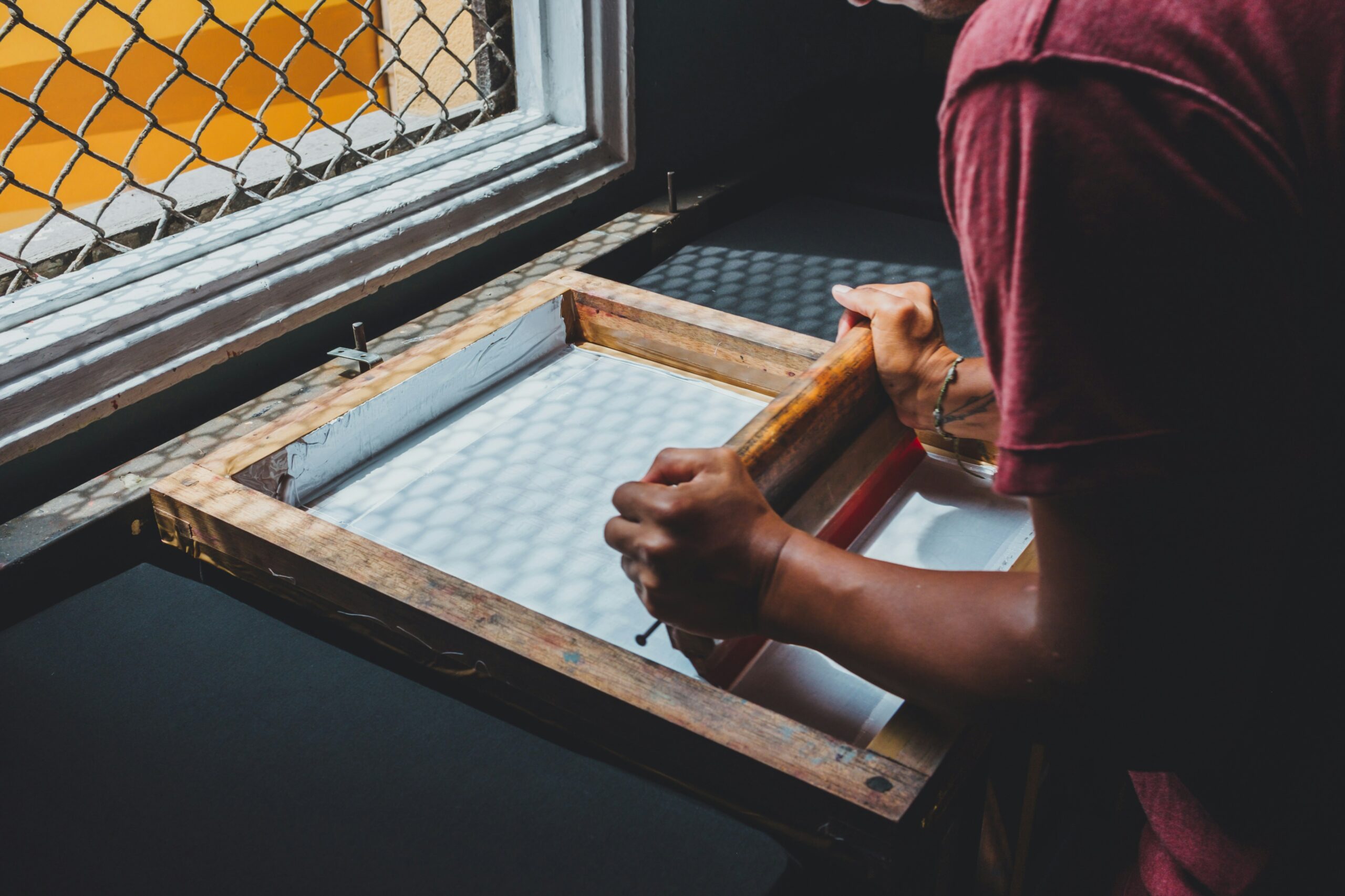When it comes to promoting your business, custom promotional products are a powerful way to increase brand visibility and connect with your target audience. From t-shirts and bags to mugs and hats, the possibilities are endless. However, one critical factor that can impact the quality and effectiveness of your promotional items is the “printing method” you choose.
At Teddy’s Cr8tns, we offer various printing options to ensure your brand’s message is delivered with precision, vibrancy, and durability.
To help you make the best decision, here’s a guide to choosing the right printing method for your promotional products:
Screen Printing
Best for: T-shirts, hoodies, bags, and flat fabric items.
Overview:
Screen printing is one of the most popular and versatile printing techniques. It involves using a mesh screen to transfer ink onto a surface, allowing vibrant colors and bold designs.
This method works especially well for larger quantities and simple designs with limited colors.
Pros:
- Cost-effective for bulk orders.
- Long-lasting and durable, even after multiple washes.
- Ideal for bold, solid colors.
Cons:
- Not as effective for highly detailed or multicolored designs.
- May not be suitable for complex gradients or photographs.
When to use it:
If you’re looking to print a large number of t-shirts or fabric items with simple logos or bold text, screen printing is an affordable and reliable option.
Heat Transfer Printing
Best for: T-shirts, bags, hats, and various apparel.
Overview:
Heat transfer printing uses heat and pressure to apply designs onto garments. This method involves printing your design onto a special transfer paper, which is then pressed onto the fabric.
It allows for detailed, full-color prints, making it ideal for intricate designs and photographic images.
Pros:
- Great for full-color images and complex designs.
- Allows for detailed and photographic prints.
- Can be used on a variety of materials.
Cons:
- Not as durable as screen printing; designs may fade or crack over time.
- Best for smaller quantities due to setup costs.
When to use it:
Heat transfer is perfect for short-run projects or when you want detailed, vibrant, and multicolored designs on your promotional products.
Embroidery
Best for: Hats, polos, jackets, bags, and thicker fabrics.
Overview:
Embroidery involves stitching your logo or design onto fabric using colored threads.
This method adds texture and a premium look to your promotional products, making it a popular choice for businesses seeking a polished, professional appearance.
Pros:
- High-quality, durable, and long-lasting.
- Professional, premium finish.
- Ideal for logos and simple designs.
Cons:
- Not suitable for complex, highly detailed images.
- Can be more expensive, especially for large designs or multiple colors.
When to use it:
Embroidery is perfect for promotional products like hats, polos, and outerwear that require a professional and upscale look. It’s best for simple logos or designs.
Sublimation Printing
Best for: Mugs, promotional items, sportswear, and polyester fabrics.
Overview:
Sublimation printing uses heat to transfer dye onto materials, particularly polyester fabrics and hard items like mugs.
This process creates a vibrant, all-over print that’s permanent and won’t fade or peel over time. Sublimation is great for full-color designs that cover the entire surface of a product.
Pros:
- High-quality, vibrant prints.
- Ideal for full-color, edge-to-edge designs.
- Long-lasting and won’t fade or peel.
Cons:
- Works best on polyester fabrics or specially coated items.
- Limited to light-colored fabrics and surfaces.
When to use it:
Sublimation is ideal for promotional items like mugs, sportswear, and tote bags where you want vibrant, full-color designs that will stand the test of time.
Direct-to-Garment (DTG) Printing
Best for: Custom t-shirts and apparel with detailed designs.
Overview:
Direct-to-garment (DTG) printing uses inkjet technology to print designs directly onto the fabric.
It offers incredible detail and allows for complex, multicolored designs, making it a favorite for custom apparel that requires fine details and vivid imagery.
Pros:
- Great for detailed, intricate designs and photographs.
- No color limitations; you can print full-color designs.
- No minimum order requirements, making it perfect for short runs.
Cons:
- Works best on 100% cotton fabrics.
- Not as durable as screen printing for large-scale designs.
- Higher cost per item for large orders.
When to use it:
DTG is ideal for small batches or individual pieces where you need high-quality, detailed, and full-color prints, like custom t-shirts or specialty apparel.
Pad Printing
Best for: Small promotional items like pens, keychains, and bottles.
Overview:
Pad printing is a technique that transfers ink from a silicone pad onto small or irregularly shaped objects.
It’s commonly used for printing logos and designs on items like pens, stress balls, and other promotional products that have non-flat surfaces.
Pros:
- Can print on a variety of surfaces, including plastic, metal, and rubber.
- Ideal for small, detailed logos and text.
- Great for high-volume production runs.
Cons:
- Limited to simple designs and fewer colors.
- Not suitable for large designs or complex artwork.
When to use it:
Pad printing is perfect for small promotional items with irregular shapes, such as pens, keychains, or drinkware, where you need to print small logos or text.

Choosing the right printing method for your promotional products depends on the type of item, your design needs, and your budget. By selecting the right printing method, you’ll create promotional items that not only look great but also leave a lasting impression on your audience.












